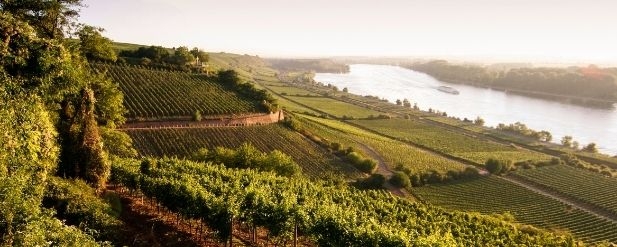
Dorothee Zilliken summed it up best when she said that “the 2020 vintage is like opening the window in the morning during a long hot summer and breathing in the cool, fresh air”. Absolutely. But for us more perfunctory tasters, we relied on descriptors such as “irresistible”, “beautifully-weighted” and “charming” with almost tedious repetition in our 2020 tastings this year. Having now acquainted ourselves with the new releases from Germany’s greatest estates, it is our view that it is in the graceful Kabinetts, refined, lacy Spätlesen, and superlative Trocken and Grosses Gewächs that the peaks of the vintage are to be found.
We were thrilled to learn that the 2020 Rieslings by-and-large share a sense of lift and poise that is totally at odds with the notion of 2020 as just another hot year. If they are perhaps not as profound, nor as concentrated, as the 2018s or 2019s, then the 2020s make up for that in detail, fluidity and flair. For it’s important to note that while 2020 was indeed a warm year and the driest of the three recent vintages, it was cooler overall than 2018 and saw fewer extreme heat spikes than 2019. The wines’ relative lightness means that they have a more justifiable claim to classicism, and we’d go as far to say that we encountered several wines that were more stirring and more beautiful than ever before. I only hope our notes do them justice.
The best 2020s marry the open-knit personality of a warm summer with the vibrancy and precision of a cool harvest. Analyses show that alcohols are on average half a degree lower in 2020 across Germany than in the previous two years, and acidity levels sit in the middle – a harmonious, hugely attractive balance that Andreas Spreitzer cites as typical of the “modern Germany”.
So how did producers arrive at this friendly equilibrium? Well, despite some mildew pressure early in the season, both budbreak and flowering were early and broadly successful. Conditions remained dry and warm from then on, until the weather turned in September, bringing with it cooler temperatures and intermittent rains. Where this would normally send producers into a state of frenzy, the drought-like conditions to that point meant sugar accumulation had been slow (unlike the previous two years), and Thomas Haag explained that late rains helped to “open up the roots and give energy to the vineyards.” Most estates in the Mosel, Saar, Ruwer and Nahe were able to start or resume the harvest after the rains had passed and make high quality selections in the vineyards. The downside is that rain that close to the harvest generally impedes the growth of noble botrytis and resulted in sugar concentrations perfectly suited to fine Kabinett, Spätlese and Trocken styles. The few Auslesen and Goldkapsels that have been produced are likely to be highly sought after.
In the Rheinhessen, Carolin Spanier-Gillot was pleased to inform us that they saw enough water and cool nights through the summer, save for three or four “tropical evenings”, to consider 2020 a really well-balanced, even vintage with no major issues to report. In the Rheingau, Andreas Spreitzer cites a high preponderance of old vines and deeper, water retaining soils as key factors in their wines’ smooth balance and lively intensity. Harvest at both estates was largely unaffected by rain.
If the ultimate goal is to produce highly refined, terroir-transparent Rieslings, then 2020 must be considered a success. The wines are animated and fluid and will seduce even the most seasoned Riesling collectors with their levity, precision and balance. That they hail from some of the most labour-intensive vineyards in the world, can age for decades, and continue to be offered at prices deemed unconscionable in other leading wine regions is a pretty major bonus.
Mark Dearing Justerini & Brooks, August 2021.
61 St. James's Street, London SW1A 1LZ
Reg. Company No: 68576
AWRS URN: XPAW00000105319
Please do not share with anyone under the legal purchase age for alcohol.
Drink Responsibly www.drinkiq.com
© Justerini & Brooks 2024. All Rights Reserved.